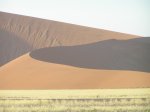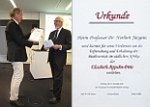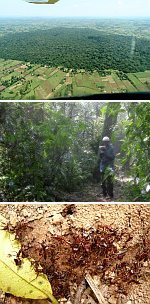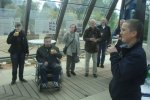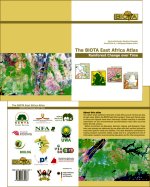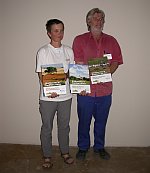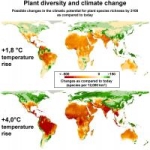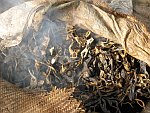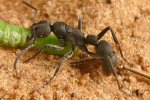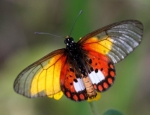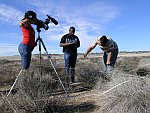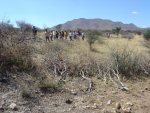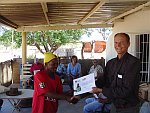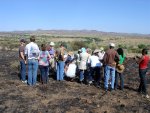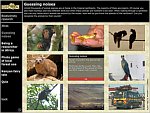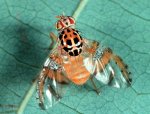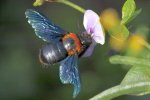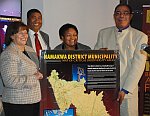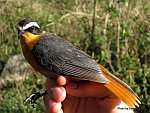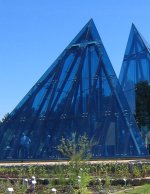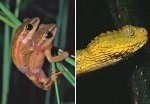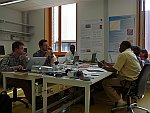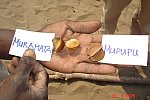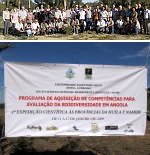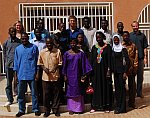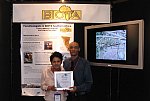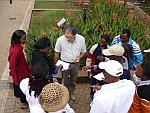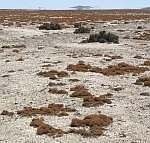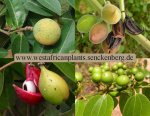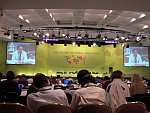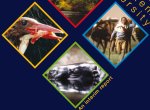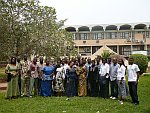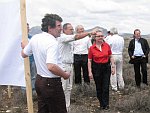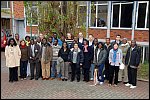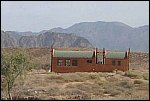 



Weather data
A large number of automatic weather stations has been implemented in the frame of the BIOTA AFRICA project by the Namibian National Botanical Research Institute (NBRI) and the Group "Biodiversity, Evolution and Ecology" (BEE) of the University of Hamburg. The website offers hourly updates of data and graphs of a large number of weather parameters.

|
News
 |
New publication: Knowledge lives in the lake. Case studies in environmental and customary law from southern Africa, edited by Manfred O. Hinz; Oliver C. Ruppel and C. Mapaure (2012): Windhoek, Namibia Scientific Society.
Knowledge lives in the lake. Case studies in environmental and customary law from southern Africa is a recently launched book that follows Biodiversity and the ancestors. Challenges to customary and environmental law. Case studies from Namibia and published in 2008 (Windhoek: Scientific Society). Like its predecessor, Knowledge lives in the lake contains research by law students done within the framework of the BIOTA AFRICA sub-project administered by Manfred Hinz for the Faculty of Law of the University of Namibia and by the co-editors Hinz and Ruppel who also supervised the work assembled in the book. Some of the contributions contained in Knowledge lives in the lake reach beyond BIOTA AFRICA and bridge to the Future of the Kavango Project (TFO).
The contributions: Manfred Hinz wrote an introduction in which he applies the current discussion on the architecture of governance and law in the globalising world to the political vision of Agenda 21, as it was adopted in the Rio Earth Summit in 1992. Knowledge lives in the lake offers studies by
-
P. Anyolo on Namibian conservancies in general and the Uukwaluudhi conservancy; by A. Takaendesa on the situation of black Rhino in Zimbabwe,
-
N. E. Namwoonde on the problem of the registration of communal land in the Kavango Region and the Jatropha biofuel production in the Kavango and Caprivi Regions,
-
C. Mapaure on the legal status of trees and two studies on water law,
-
A. Zender on possible prevention of land degradation; and a final contribution by
-
Oliver Ruppel and Sanita van Wyk, a post-graduate student of the University of Stellenbosch, on an important water case decided in Botswana.
The title: Knowledge lives in the lake refers to a statement by the famous South African traditional healer and writer Credo Mutwa, who refers to his grandfather guiding him into the world of African spirituality:
There is [the grandfather said] a huge unseen lake somewhere in the spirit world where all the knowledge of the universe - past, present and future - is to be found." Knowledge lives in the lake in the form of little silver fishes," my grandfather said.
The papers on water - water as a lifeline, water as a right, and the socio-political implication of water as a common good - are not only major contributions to this publication; the socio-economic framework responsible for the water of the Kavango River is also central to work that has taken up at least certain aspects of the BIOTA AFRICA Project and will occupy the consortium of researchers until 2015, namely The Future Okavango (TFO) Project.
The book is available in Namibia from the Namibia Scientific Society in Windhoek and all Namibian bookstores. In Germany, it can be obtained from the Namibiana Buchdepot in Delmenhorst.
ISBN 978-99916-855-8-8 (Namibia)
ISBN 978-3-941602-75-5 (Germany)
|
 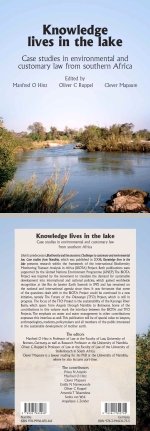
|
 |
New publication: The book "Rehoboth, Namibia - Past & Present" with contributions from several BIOTA-related authors is now available. For the first time there is a comprehensive account of 'Baster matters' set in very broad context: from their beginnings until today. Based on interdisciplinary research the book contains two parts: it focusses on the system of land tenure of Rehoboth, viewing it from political and usage perspectives.
Six authors from three countries worked on the book:
Germany: Hartmut Lang, Christiane Naumann (Social & Cultural Anthropology), Dirk Wesuls (Ecology), Cornelia Limpricht (History)
USA: Sidney Harring (Law)
Namibia: Ibo Zimmermann (Agriculture).
The authors Cornelia Limpricht, Hartmut Lang, Christiane Naumann, Dirk Wesuls and Ibo Zimmermann were involved in the BIOTA-Africa programme - working in the Rehoboth area between 2004 and 2010.
Title of Book: Rehoboth, Namibia - Past & Present (2012)
Edited by: Cornelia Limpricht
Solitaire Press, Windhoek, Namibia
502 pages, ca. 450 figures (photos, maps, graphs)
Namibia: ISBN 978-99945-73-01-1 / Germany: ISBN 978-3-941602-68-7
The book is available in Namibia:
In Rehoboth the book will be distributed by the Rehoboth Community Trust, - in Windhoek and Swakopmund it is available in the usual bookshops like BookDen, BookCellar or Swakopmunder Buchhandlung.
In Germany the book is available at Namibiana Buchdepot Weblink
Download table of contents (26kB) (26kB)
|
 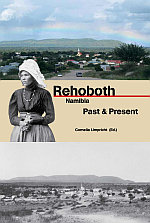
|
 |
International workshop on para-ecologist initiatives within applied research projects
More than 20 participants (researchers and para-ecologists) from 10 different countries will share their experiences and discuss the way forward. The workshop is generously funded by the Volkswagen Foundation.
14 - 17 June 2011 Biocentre Klein Flottbek and Botanical Garden, hosted by the Section Biodiversity of Plants
Please contact: uschmiedel@botanik.uni-hamburg.de
|
|
 |
Para-ecologists in southern Africa The exhibition gives insight into the work and experiences of the para-ecologists in southern Africa. Para-ecologists are members of land user communties that participate in and contribute to the biodiversity research and monitoring activities of the Biocentre Klein Flottbek in southern Africa.
28th of May until September 2011, Botanical Garden of the University of Hamburg, desert pyramids.
Please contact: uschmiedel@botanik.uni-hamburg.de
|
|
 |
Today, the Book series of BIOTA Southern Africa has been launched by The Honourable Minister of Environment and Tourism of Namibia, Netumbo Nandi-Ndaitwah (centre), the Councellor for Development Cooperation of the Embassy of the Federal Republic of Germany in Windhoek, Dr Romeo Bertolini (left), the Master of ceremony, Dr Julian Fennessy, the chair of BIOTA Southern Africa, Norbert Juergens (right) and numerous guests in the frame of a ceremony at the Goethe Centre in Windhoek, Namibia.
more
At the same time, also the Website "Photo Guide to Plants of Southern Africa"
 http://www.southernafricanplants.net, has been launched officially. All plant people are invited to please contribute further photos to expand the number of species, covered by the website. http://www.southernafricanplants.net, has been launched officially. All plant people are invited to please contribute further photos to expand the number of species, covered by the website.
Please contact: photo@southernafricanplants.net
Download Poster of the photoguide
 |
 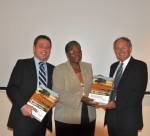
Photo: Steph Fennessy
|
 |
With the three-volume book Biodiversity in southern Africa, the long-term research project BIOTA Southern Africa presents the results from nearly one decade of biodiversity research in southern Africa. Almost 200 researchers from Germany, Namibia, South Africa, and a few other countries contributed to the more than 1,400 richly illustrated pages. They describe their findings on ecology and biodiversity in the biomes of southern Africa under the influence of landuse and climate change.
BIOTA Books will be launched in South Africa during the Arid Zone Ecology Forum (AZEF) conference in Gariep Dam (Free State Province, South Africa) between 4th and 7th October 2010. In October and November 2010, the recently published opus will be launched with public events in Namibia and Germany.
more |
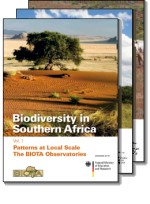
|
 |
On 9 August 2010, the Global Index of Vegetation-Plot Databases (GIVD) was launched. This global metadatabase of vegetation databases is an important new tool for biodiversity informatics. Shortly after launch of the GIVD homepage, already more than 100 databases with more than 2.3 million relevés were registered, including the three databases of BIOTA AFRICA.
more |
|
 |
BIOTA East Africa: A new contribution to BIOTA AFRICA’s biodiversity inventory is online: In the vegetation ecology section: Tree and seedlings ecological data for Budongo and Kakamega Forest. This contains data on the tree structure, diversity and diameter growth rates. Further tree seedling dynamics (density, recruitment and mortality) and diversity in the different BDO's of both forests are shown. Additionally values for litterfall for Kakamega are presented.
more |
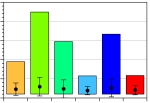
|
 |
BIOTA Southern Africa: The weather data from weather stations at biodiversity observatories in Namibia and South Africa have been updated in April 2010. You can find information on the presently available stations, time periods, values and time resolutions at:
BIOTA Southern Africa Weather Data portal
Please note: There are data from four new weather stations available. Click on one of the links below to go directly to the weather station (observatory).
Kleinberg
Rooisand
Claratal
Sandveld
|
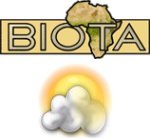
|
 |
On 24-26 February 2010, the 9th international Meeting on Vegetation Databases under the motto "Vegetation Databases and Climate Change" took place in Hamburg, Germany. The Meeting was co-organised by BIOTA AFRICA.
With nearly 150 participants and more than 30 nationalities present, this 9th meeting was by far the largest of this conference series and probably the biggest ecoinformatics conference that has taken place to date. Three keynote lectures, 25 talks, more than 60 posters and five practical workshops were all very well received by the international audience. BIOTA AFRICA was prominently presented by a keynote lecture (Dr. Michael C. Rutherford: Development of the South African National Vegetation Database: applications and links to climate change), three oral contributions from BIOTA Southern Africa (Dr. Ute Schmiedel), BIOTA West Africa (Dr. Marco Schmidt), and BIOTA Maroc (Dr. Manfred Finckh), and one workshop about the BIOTABase software. About one third of the presented posters were devoted to methods and results from BIOTA AFRICA.
Reports, as well as abstracts and PDF's of many contributions are available at Weblink.
Presently, three major publications from the conference are in preparation:
-
Special Feature "Ecoinformatics and global change" in Applied Vegetation Science (registration closed)
-
Special Volume "Vegetation databases for the 21st century" of Biodiversity & Ecology (submission until 30 June 2010)
-
World Index of Plot-Based Vegetation Databases. This will be a comprehensive metadatabase of available digitized relevé data. Already 54 databases with approx. 1.5 million relevés have registered. Deadline for submission: 30 June 2010; registration at Weblink.
Download Book of abstracts (PDF) 
|
 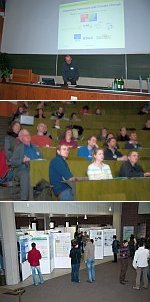
Photos: J.Dengler
|
 |
BIOTA West Africa K. E. Linsenmair, University of Würzburg, and Robert Foro, Ministry of Research and Higher Education in Burkina Faso, inaugurated the Information Centre on Biodiversity, funded by the German Ministry of Education and Research (BMBF), at the campus of the University of Ouagadougou on 25 January 2010.
An Information Centre for West Africa on biodiversity - this highly ambitious task has been mastered with funds of the German Ministry of Education and Research (BMBF) by the transdisciplinary research project BIOTA West Africa at the campus of the University of Ouagadougou, Burkina Faso.
Since 2001 BIOTA West Africa has been working on the current state of and the hazards to biodiversity in Burkina Faso, Benin und Côte d'Ivoire aiming at the development of more sustainable land use forms and methods for the restoration of degraded soils to halt further erosion of biodiversity in the region. An optimal transfer of the gathered knowledge to the different stakeholders (e.g. farmers, foresters, traditional healers, teachers and researchers) will be greatly facilitated by the Information Centre: all pertinent results are pooled there, comprehensive botanical and exemplary zoological reference collections are easily accessible and stakeholders can be trained and informed appropriate to their respective needs. Thus, the Information Centre facilitates the implementation of the worked out recommendations and ensures the attainment of BIOTA West's main goals: essentially contributing to a more sustainable use and the long term protection of West Africa's rich biodiversity to maintain the ecosystems' capacity to further provide their vital goods and services constituting an indispensable basis of the population's livelihood.
For more information please contact the coordination head office of BIOTA West Africa.
External press links: Sidwaya
Le Pays
Photo: Robert Foro, Ministry of Research and Higher Education in Burkina Faso, and K. Eduard Linsenmair, University of Würzburg, Germany, inaugurate the Information Centre in Ouagadougou.
|
 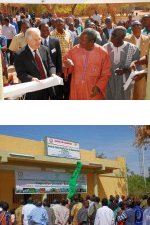
Photos: M. Wegmann
|
 |
BIOTA Southern Africa performs at the Arid Zone Ecology Forum (AZEF) 2009: AZEF took place in the historical Karoo town of Graaff-Reinet, in the Eastern Cape province of South Africa from 5-8 October 2009. The theme of the conference was “Biodiversity conservation in arid zones: people, species and landscapes”.
About 100 people, ranging from scientists, students, planners, land owners, NGO’s and educators working in arid areas, participated in this year’s forum. Plenary addresses included topics such as restoration and local farming perspectives. Delegates also had the opportunity to go on field trips led by local experts and landowners and learn about game farming, arid alien invasions, rehabilitation and riparian ecology. BIOTA Southern Africa was represented by students, para-ecologists and researchers from South Africa, Namibia and Germany and was very successful by being awarded numerous prizes for best presentations by young scientists.
The following BIOTA students have been awarded:
The joint second prize for the best paper presentation has been shared between the two para-ecologists Richard Isaacks and Sebedeus Swartbooi, and Justus Kauartjirue from Polytechnic of Namibia.
The first prize for the best poster speed presentation was awarded to the BIOTA student Clyde Lamberts from ARC / CapeNature. The 2nd prize for best poster speed presentation was awarded to Sarah Meyer from Universities of Karlsruhe and Hamburg.
The conferences closed with the launch of the 20 min documentary “Bridging the gap – para-ecologists in action” produced by the BIOTA para-ecologists in 2009. For more info please see: AZEF
|
 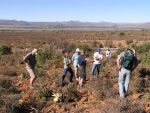
Field trip lead by Jan Vlok
Photo: BIOTA AFRICA
Tessa Oliver
|
 |
BIOTA South Sustaining our Savannas Open Day, Polytechnic of Namibia, on 6 November. A BIOTA south Sustaining our Savannas Open Day was held at the Polytechnic of Namibia, on 6 November, 2009. The aim was to showcase research products (posters and books), films and decision support tools and games to the general public and selected key stakeholders.
After an introduction, participants watched three DVDs (Wiza Wetu, Bridging the Gap and Biodiversity is our Life), had a chance to test and experiment with the Decision Support System (DSS) for Bush Encroachment, the Kalahari Biodiversity Simulator, and the Livestock Production Game. Robert Mukuya, a paraecologist from Rundu, introduced WIza Wetu (a DVD about illegal logging in the Kavango) and Bridging the Gap (a DVD about the paraecologist programme, produced by the paraecologists themselves).
The participants had very good comments regarding the Day, and the products presented. It is hoped that this Open Day will go some way to realizing BIOTA AFRICA's aim of maintaining biodiversity through the various ministries and NGOs in Namibia that are already working hard towards sustainable natural resource management.
Please contact one of the following people for further information:
 Dave Joubert:
djoubert@polytechnic.edu.na
Dave Joubert:
djoubert@polytechnic.edu.na
 Bertchen Kohrs:
bertchenk@iway.na
Bertchen Kohrs:
bertchenk@iway.na
Photo: A planned fire at Neudamm College, October 2009. Research, funded by BIOTA AFRICA, strongly suggests that fires, during the critical time of bush seedling establishment, might be crucial in preventing bush encroachment.
|
 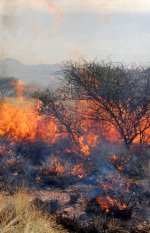
|
 |
A metadata overview has been set up in the renewed data portal. The metadata overview provides information about available data. We invite BIOTA participants to insert metadata about data sets produced by their own workpackages. For that purpose an online form can be used.
BIOTA AFRICA Metadata
|

|
 |
A new data portal about available BIOTA AFRICA data is online. Starting from this portal, the access to various BIOTA AFRICA data like metadata, weather data, vegetation ecology data, animal diversity data and much more is available.
BIOTA AFRICA Data portal
|

|
 |
A fully functional mirror of the main BIOTA AFRICA website has been set up in Namibia.
The two web sites are identical. The mirror site may be accessed by visiting the NBRI (National Botanical Research Institute of Namibia) home page www.nbri.org.na and clicking on the 'BIOTA' link. Setting up of the mirror was conducted under the BIOTA AFRICA BioMonitoring Data Facility, and was motivated by the desire to ease local access to BIOTA data, as well as promote better local ownership of the BIOTA project. Users are encouraged to inform the website developers of their experiences.
|

|
 |
During an expert discussion on "scientific cooperation with developing countries and emerging economies" in Berlin on March 18th 2009, which was organized by the Parliamentary Group of the Christian Democratic Union of Germany (CDU) and the Christian Social Union of Bavaria (CSU), the interdisciplinary and applied research project BIOTA AFRICA was highlighted as one of three best practice cases for this kind of cooperation.
At the beginning of the event, the Federal Minister of Education and Research, Dr. Annette Schavan, highlighted the importance of "science as a key for development". Prof. Dr. Barbara Reinhold-Hurek and Prof. Dr. Michael Kirk, who are conducting research within the BIOTA project since 2000, explained at the meeting how the project puts this into practice. BIOTA AFRICA was envisaged as a best practice case that shows "How German Research and Technology Helps Support Coping with the Consequences of Climate Change".
The BIOTA AFRICA representative from Namibia, Ms Emilia Ndateelela Namwoonde from the University of Namibia (UNAM), contributed to the manifold discussions by giving a very clear insight into the benefits the BIOTA AFRICA initiative has had for African postgraduate students during the past almost 10 years of the project. She appreciated the opportunity of being an "information initiator" for the Namibian science community and for decision makers. Ms Namwoonde also underscored the importance of sharing the findings of research both with the people at the grassroots level, where the research was conducted, as well as with the government level to support policies for sustainable development.
In his closing remarks, Dr. Christian Ruck, Chairman of the Working Group on Economic Cooperation and Development of the CDU/CSU Parliamentary Group, underlined the importance of continuity and sustainability of international research projects.
|
 
Ms Emilia Ndateelela Namwoonde
Foto: BIOTA AFRICA
Hannah Scharlau
|
 |
18 March 2009 - BIOTA in Parliament: The CDU/CSU Parliamentary Group organises a workshop on scientific cooperation with developing countries and emerging economies, involving BIOTA AFRICA.
Weblink 
Weblink 
Invitation and program (PDF) 
(Deadline for registration: 11 March 2009)
|
|
 |
The workshop "BIOTABase Management of biodiversity data" took place at the Biocentre Klein Flottbek, University of Hamburg, during February 2 - 3, 2009. It was moderated by Manfred Finckh (BIOTA Maroc) and Gerhard Muche (BioMonitoring Data Facility). The German and African participants collaborate in the projects BIOTA Maroc, BIOTA Southern Africa and in Burkina Faso.
On the occasion of the workshop a new release of the BIOTABase software package with several extended or enhanced features has been published on the BIOTA Website.
Download BIOTABase
|

|
 |
Several of the presentations which were presented at the BIOTA AFRICA Congress 2008 (29 September - 3 October) are downloadable now as PDF-files.
more |
|
 |
"Langsames Sterben am Kap - Klimawandel im südlichen Afrika",
a film by Richard Klug, ARD-Studio Johannesburg (in German).
The film shows the consequences of global change on biodiversity. BIOTA AFRICA provided important results of its research to the film-makers.
German TV Phoenix:
29 November 2008 11:00
30 November 2008 07:30
30 November 2008 18:00
The film was already shown in German TV SWR on 29 October 2008 22:30. |
|
 |
Successful start of the International Congress on Biodiversity of Africa at Spier, South Africa
Over 350 scientists from more than 15 African countries, Germany and Brazil, high-level representatives also from UNESCO, IUCN, DEAT, DST, GEOBON, OSS, WWF and representatives of the German and several African ministries and local stake holders opened the five days international congress on Biodiversity of Africa at Spier in South Africa. The discussions on the first reflect the urgent need to continue and further strengthen the well-established partnerships between African and German research institutions and scientists. All organisations underscore the necessity of further developing a pan-African network on biodiversity which will support the national initiatives to conserve biodiversity for the sake of sustaining human well-being. It was highlighted that this African network of observation sites should be well-linked to similar initiatives at the global level. The Brazil representative welcomed partnerships with the African network.
The Congress has been organised by the German Federal Ministry of Education and Research (BMBF), the BIOTA AFRICA Project and the South African National Biodiversity Institute (SANBI).
more |
 
|
 |
The weather data for climate stations and observatories in Namibia and South Africa has been updated in september. Click on the link below and then select an observatory by using the Drop-Down-list or click on the map!
more |

|
 |
At the 9th Conference of the Parties to the Convention on Biological Diversity 2008 in Bonn, Germany (CBD COP9), the German Federal Ministry of Education and Research (BMBF) invited farmers, forest guides, park directors, tree nursery workers and scientists from Africa, who cooperate with the BMBF-funded BIOTA AFRICA project, to present their view on biodiversity conservation and sustainable land use in Africa. The brochure “Biodiversity in Africa: The other perspective”, which is now available as download, summarises these fruitful discussions between land users, scientists and decisions makers and underlines the fundamental role that research plays in protecting biodiversity and promoting sustainable land use in Africa.
The brochure gives an outlook on the consolidation and “survival” of initiatives which have been developed or are being supported by the BIOTA AFRICA Project when the project comes to an end in 2010. The brochure will be available as printout at the international BIOTA AFRICA Congress 2008, titled, Biodiversity of Africa - Observation and Sustainable Management for our Future in Spier, South Africa (29 September - 3 October 2008).
Download (2.4 MB) (2.4 MB)
|
 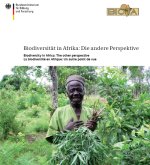
|
 |
GIS training for BIOTA-East counterparts in Nairobi, 6 – 13 August 2008
Having trained BIOTA-East scholars during the 2nd phase of BIOTA in 2005, this time a GIS training was offered to the main counterpart institutions in Nairobi. Kenya Wildlife Service (KWS), Kenya Forest Service (KFS), and Nature Kenya all sent two ‘students’ while National Museums of Kenya (NMK) hosting the venue filled the remaining six seats. Background and GIS knowledge of the participants were rather different and thus the course set-up was a challenge. In the end subproject E02 decided to treat all as beginners, to teach the GIS theory without focusing on particular areas of applications, but to include even complex analysis tasks to be performed by the participants. We aimed to demonstrate that GIS is far more then just the making of maps.
While the mornings were packed with lectures on theory and methods of GIS, in the afternoons people were happy to gain practical experience with GIS. Thanks to ESRI Germany the exercises could be performed with ArcGIS, the software in use at the counterpart institutions, although only on selected computers. Subproject E02 took the chance of testing its BiotaEastGIS Tool, a customised GIS developed based on BIOTA experiences allowing for GIS analysis even by GIS-inexperienced users. A presentation on use of GIS and remote sensing within the BIOTA East Africa project open to anyone interested (the room was packed) showed the potential of such analyses in biodiversity research and management.
For us teaching the course, it was fun and a pleasure to communicate with people we hardly knew before. For the participants we hope that we have stimulated their interest to find out more about the many things for which a GIS can be used. At least they complained that they would have liked a longer training. Thanks to all who contributed to the success of the course! |
 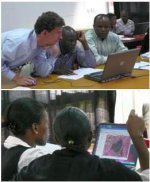
|
 |
In a new paper in the journal Science RJ Scholes and colleagues from DIVERSITAS, NASA and GEO present the plans "Toward a Global Biodiversity Observing System" (Vol 321, 1044-45). Full list of authors: R. J. Scholes, G. M. Mace, W. Turner, G. N. Geller, N. Jürgens, A. Larigauderie, D. Muchoney, B. A. Walther, H. A. Mooney.
more |
|
 |
Sign up for BIOTA AFRICA pre- and post-congress excursions.
more |

|
 |
BIOTA East Africa, subproject E02, will conduct a GIS course in Nairobi at the National Museums of Kenya (NMK) from August 6th to 13th, 2008. The course will be attended by 12 to 14 participants from four Kenyan counterparts, NMK, Kenya Wildlife Service (KWS), Kenya Forest Service (KFS) and Nature Kenya. Software support is provided by ESRI. |
|
 |
BIOTA AFRICA at COP-9 side event (28 May 2008, 13:15 – 14:45, Saal Bonn, Maritim)
BMBF projects: The other perspective: Visions of African stakeholders on biodiversity conservation and sustainable development Stakeholders (land users and decision makers) from four African countries will present and discuss their experiences on joint research and implementation of sustainable use and conservation practices of biodiversity within the African-German BIOTA AFRICA Project. This research project focuses on the effects of land use and climate change on biodiversity in different African biomes. The land users and the decisions makers from Africa will highlight, how global changes affect their livelihoods and what alternatives the joint BIOTA AFRICA has developed in order to sustainably utilise biodiversity and simultaneously generate income in the future. (6 Stakeholders from Africa plus Facilitator) BIOdiversity Monitoring Transect Analysis in Africa (BIOTA-Africa) is a joint German-African research program which investigates the effects of land use and climate change on biodiversity in Benin, Burkina Faso, Côte d´Ivoire, Kenya, Namibia, South Africa, Uganda. BIOTA AFRICA - scientifically supports sustainable use and conservation of biodiversity in Africa; - has initiated the development and establishment of a continental biodiversity observation network in Africa which will contribute to the aims and implementation of GEOSS (Global Earth Observation System of Systems); - has established a network for observing land degradation and for developing measures to combat and to prevent desertification in Africa; - has developed a network for capacity development and sustainable rural development in Africa.
more |
 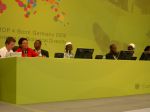
Foto: BIOTA AFRICA/
Tene Kwetche
|
 |
The documentary “Biodiversity is our Life” which BIOTA AFRICA presents on the COP-9 is available on our website.
"Biodiversity is our Life" was edited out of material shot by BIOTA members as part of their research.
more |
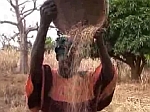
|
 |
Pressemitteilung:
Group on Earth Observation – Biodiversity Observation Network (GEOBON)
Neues Netzwerk zur weltumspannenden Beobachtung von Ökosystemen gegründet.
Berlin/Potsdam, 10. April 2008 – Führende Wissenschaftler aus über 35 Staaten haben die Errichtung eines globalen Netzwerks zur Beobachtung der biologischen Vielfalt beschlossen. Das ist das zentrale Ergebnis einer Tagung, die vom 8. bis 10. April in Potsdam stattgefunden hat. Durch die bessere Vernetzung von Geo-Informationsdaten wollen die Wissenschaftler künftig Aussagen darüber treffen können, wo Ökosysteme am stärksten gefährdet sind und mit welchen Maßnahmen sich diese am besten schützen lassen. An dem heute gegründeten GEO Biodiversity Observation Network (GEO BON) sind insgesamt 70 Nationen und 50 Organisationen beteiligt.
more |

|
 |
Floods in Namibia: DLR has posted a new satellite image crisis map related to floods in Namibia (based on TerraSAR-X data) at its website. The map shows the flood situation in the northern Omusati province on March 16, 2008.The water mask was generated from analysis of TerraSAR-X radar satellite imagery. The backdrop is a Landsat ETM satellite image. The map was created at DLR as support to the Charter Call 197.
- DLR Satellite Image Map: Namibia Omusati Province
- Flood Extent March 16, 2008 , 1:100,000
more |
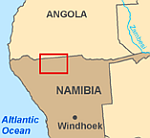
Graphic: DLR
|
 |
From February 4 to 10, Dr Annette Schavan, Federal Minister of Education and Research, shall pay a visit to the Republic of South Africa and to the Republic of Namibia. Dr. Schavans´s accompanying delegation includes representatives of different departments of the Federal Ministry of Education and Research as well as representatives of important scientific and economic institutions.
During the visit bilateral research projects play an important role. Among others, in the South African National Biodiversity Institute (SANBI) the Minister and the delegation will be informed about the present state of the BIOTA AFRICA project, funded by the South African Department of Science and Technology (DS&T) and the Federal Ministry of Education and Research (BMBF).
In Windhoek, Dr. Schavan will meet with several Ministers of the Namibian Government. Various Namibian institutions will present their research profile, activities and projects to the Minister´s delegation. Dr Schavan and her delegation will also visit the BIOTA AFRICA project combined with a field excursion to the BIOTA Biodiversity Observatories Narais and Duruchaus southwest of Windhoek.
more |

Foto: BMBF
|
 |
The Wiki Decision Support System (DSS) for Bush Encroachment in semi-arid rangelands in Namibia is launched on the Chameleon Website.
This DSS is the result of a joint research programme within the Polytechnic of Namibia, with the Departments Nature Conservation and Agriculture developing the knowledge base and rules and the Department of Software Engineering developing the software. The DSS is a proposed tool to assist in Rangeland Management in semi-arid rangelands.
more |
|
 |
On October 6, 2007, Chancellor Angela Merkel paid a visit to the Cape of Good Hope to inform herself of the current status and perspectives of the BIOTA AFRICA project.
more |
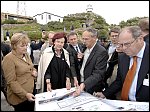
|
|
|






 Go to the WeatherNet
Go to the WeatherNet

